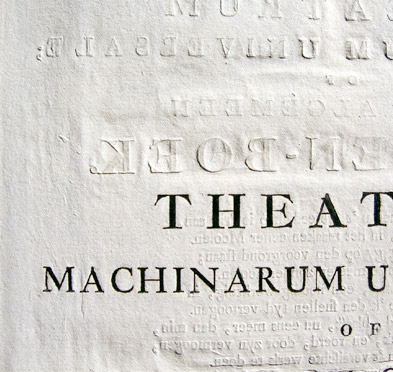We recommend capturing the largest possible image files so they may be used for any conceivable purpose. The ability to generate image derivatives from substantial masters facilitates the widest possible use of collection materials while avoiding repeated handling of rare and fragile items. A plethora of derivatives, ranging from lower-resolution versions for the Internet to high-resolution images for print reproduction and zoomable digital presentations, are readily obtained from the masters.
We are particularly aware of the rarity, value, and importance of the cultural materials we have the privilege to handle, and we take extraordinary steps to ensure their safety. Each object is thoroughly examined before imaging for potential problems, such as tight bindings on books, fragile manuscript leaves, and discoloration in photographs and prints. We can arrange for professional restoration and repair services in conjunction with imaging and, if desired, condition reports to be written before and after imaging.
Equipment Our imaging equipment is state-of-the-art, and we use cool, full-spectrum halide lighting for minimal heat and UV exposure. Many items in special collections are not permitted off-site; we will install a camera system at your facilities in any secure 10-foot-square vibration-free room equipped with a standard (110-volt or 220-volt) power supply.
Staging We photograph bound objects completely — every page from the binding to the final pastedown, including blanks. We recommend imaging bound books and manuscripts as facing-page spreads; single pages seldom capture the reader’s experience of a book or the original intent of its authors, illustrators, and typographers. The horizontal viewing space of a computer display also lends itself more agreeably to book spreads.
Handling Our photographers have conservation training and experience in handling some of the world’s most precious books. We use archival materials to build custom cradles that prevent strain on bound books and manuscripts, and we work with library conservators to ensure that the most stringent standards of non-injurious handling are maintained.
Storage and retrieval Master images are replicated on hard drives in multiple locations for redundant data storage, safeguarding against irremediable data loss. Image files are made available in the most convenient form to clients, such as over a local area network with digital asset management software; 42-line will design and maintain a web site exclusively for that purpose. Metadata, including copyright notices and keyword identifiers, can be embedded in images for legal protection and to facilitate cataloging and retrieval.

42-line’s staff has extensive experience in handling priceless works and takes extraordinary care to ensure their safety during imaging.
Gold-tooled turn-in with signature of the binder Thomas James Cobden-Sanderson. Commissioned binding in full morocco of William Johnson Cory’s Ionica. London: Smith, Elder, 1858.
Gold-tooled turn-in with signature of the binder Thomas James Cobden-Sanderson. Commissioned binding in full morocco of William Johnson Cory’s Ionica. London: Smith, Elder, 1858.



Detail, half-title of Johan van Zyl’s Theatrum machinarum universale; of groot algemeen Moolen-Boek. Amsterdam: Peter Schenk, 1761.
Detail of Cereus jusbertii, chromolithograph, finished by hand. Drawings by Toni Gürke. Karl Moritz Schumann and Max Gürke, Blühende Kakteen (Iconographia Cactacearum) im Auftrage der Deutschen Kakteen-Gesellschaft. Neudamm: J. Neumann, [1911–21].
Detail of Cereus jusbertii, chromolithograph, finished by hand. Drawings by Toni Gürke. Karl Moritz Schumann and Max Gürke, Blühende Kakteen (Iconographia Cactacearum) im Auftrage der Deutschen Kakteen-Gesellschaft. Neudamm: J. Neumann, [1911–21].